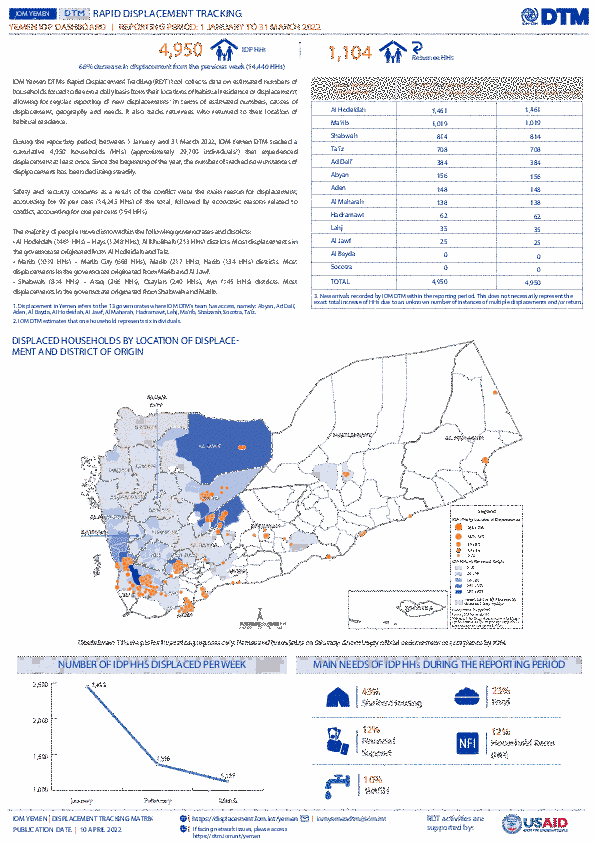-
Countries
-
Data and Analysis
-
Special Focus
-
Crisis Responses
Yemen — Rapid Displacement Tracking Update (01 January - 31 March 2022)

Contacto
DTM Yemen, iomyemendtm@iom.int
Idioma
English
Ubicación
Yemen
Fecha de instantánea
Jan 01 2022
Mar 31 2022
Actividad
- Rapid Emergency Registration
- Mobility Tracking
IOM Yemen DTM’s Rapid Displacement Tracking (RDT) tool collects data on estimated numbers of
households forced to flee on a daily basis from their locations of habitual residence or displacement,
allowing for regular reporting of new displacements1 in terms of estimated numbers, causes of
displacement, geography and needs. It also tracks returnees who returned to their location of
habitual residence.
During the reporting period, between 1 January and 31 March 2022, IOM Yemen DTM tracked a
cumulative 4,950 households (HHs) (approximately 29,700 individuals2) that experienced
displacement at least once. Since the beginning of the year, the number of tracked new instances of
displacement has been declining steadily.
Safety and security concerns as a result of the conflict were the main reason for displacement,
accounting for 99 per cent (14,245 HHs) of the total, followed by economic reasons related to
conflict, accounting for one per cent (194 HHs).
The majority of people moved into/within the following governorates and districts:
- Al Hodeidah (1461 HHs) – Hays (1248 HHs), Al Khukhah (213 HHs) districts. Most displacements in the governorate originated from Al Hodeidah and Taiz.
- Marib (1019 HHs) – Marib City (668 HHs), Marib (217 HHs), Harib (134 HHs) districts. Most displacements in the governorate originated from Marib and Al Jawf.
- Shabwah (814 HHs) – Ataq (266 HHs), Osaylan (240 HHs), Ayn (145 HHs) districts. Most displacements in the governorate originated from Shabwah and Marib.
